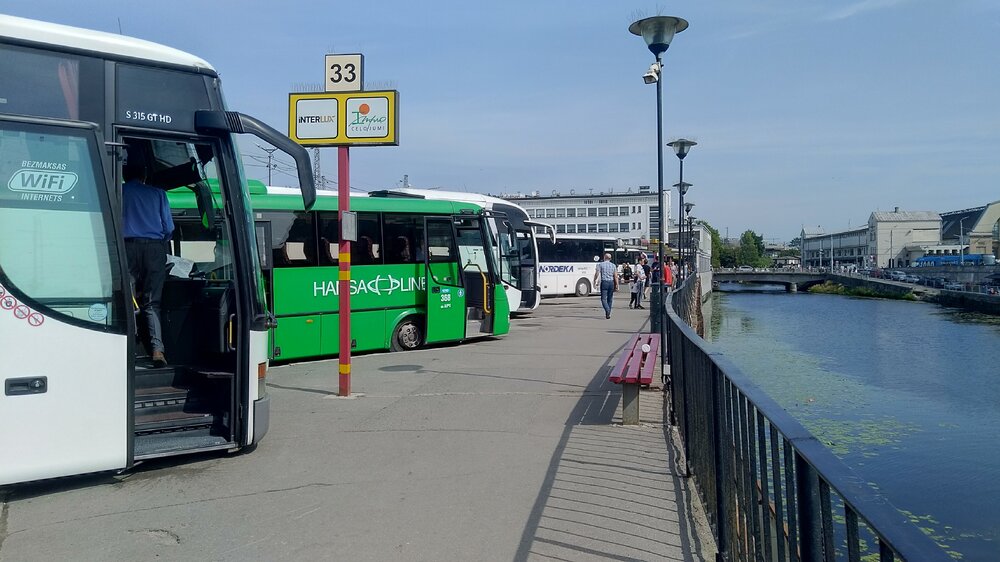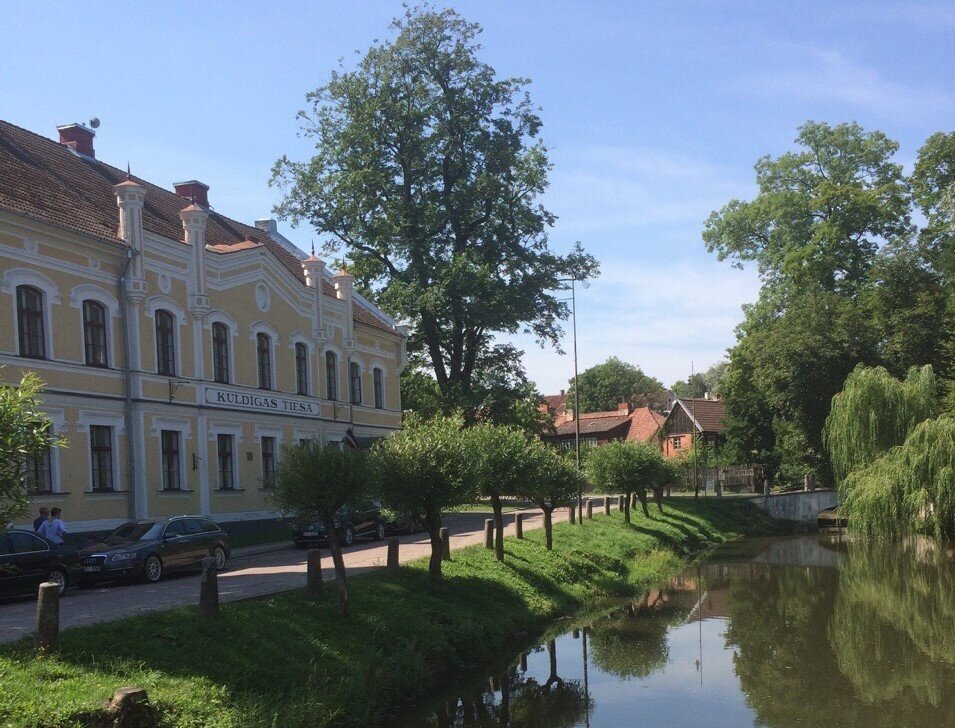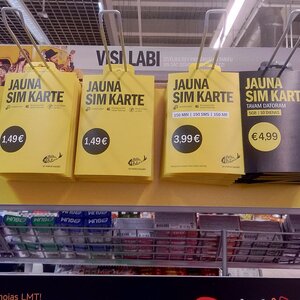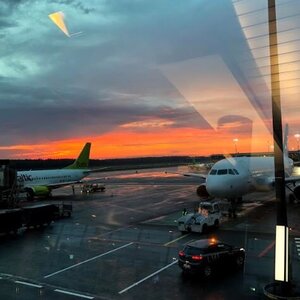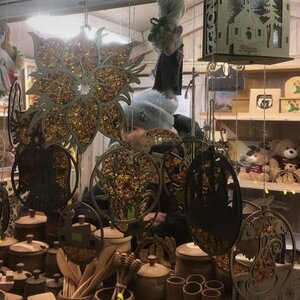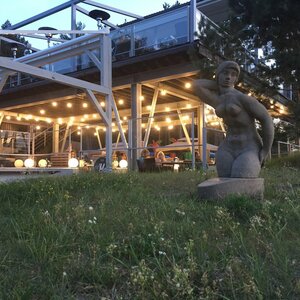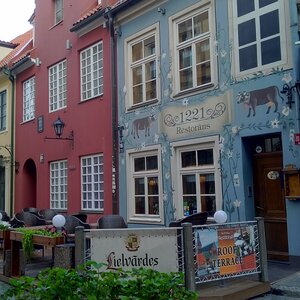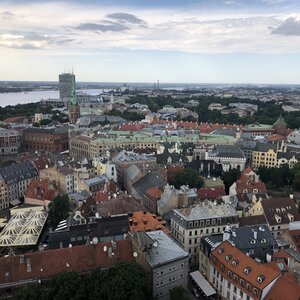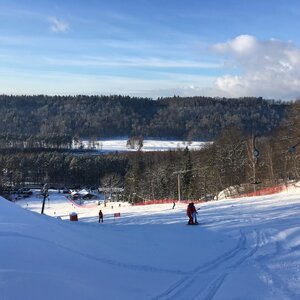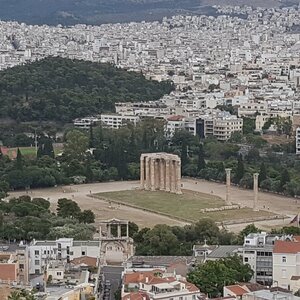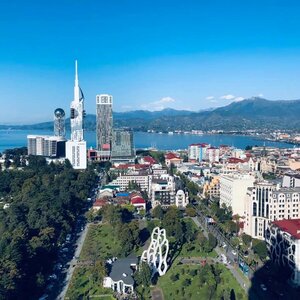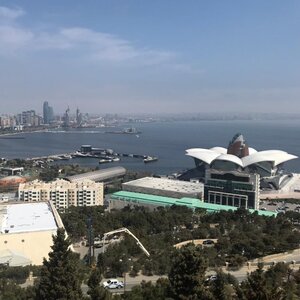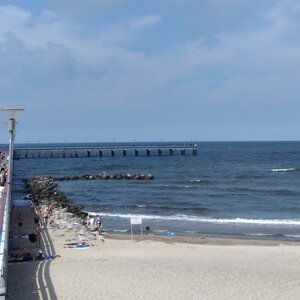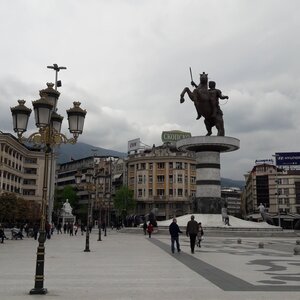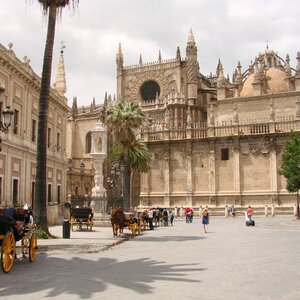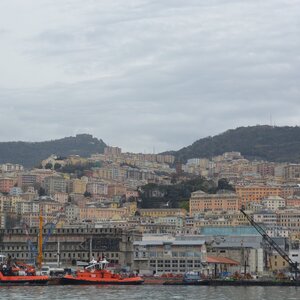Kuldiga sights
Nowadays, Kuldiga is a quiet town in the spirit of the Middle Ages: old houses and narrow streets lined with paving stones. In the 15th century, it was a major European trade center and the capital of Courland.
The first mention of Kuldiga dates back to the 13th century. At that time, the knights of the Livonian Order, mostly Germans, built a castle here, and the surrounding settlement was called Goldingen. In the XIV century Goldingen received the status of a city and joined the Hanseatic League.
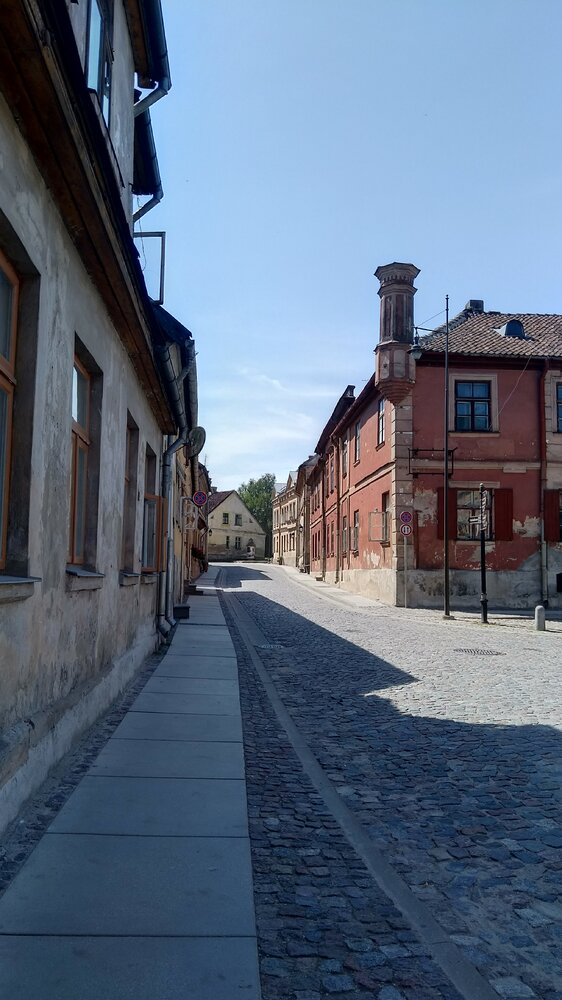
The heyday of Kuldiga began in the middle of the 17th century, when Duke Jacobs Kettler became the ruler of Courland. He traveled, studied shipbuilding in Amsterdam and, returning to his homeland, decided to make Kurland a maritime power.
It almost succeeded. Several shipyards were built in Courland, one of which was in Kuldiga. The merchant and naval fleets reached West Africa and the West Indies. The Caribbean island of Tobago and St. Andrew’s Island at the mouth of the Gambia became New Courland. All this time Kuldiga remained the capital.
City park with museum (Pils parks)
I recommend starting your sightseeing in Kuldiga from the city park. It is now a well-maintained garden with flowers, paths, ponds and sculptures. It used to be the site of the Livonian Order’s castle.
In the 18th century, during the Great Northern War, the castle was heavily damaged by the Swedes. Some of the valuables were taken to Klaipeda, the rest was taken away by soldiers. At the beginning of the XIX century the castle turned into ruins, it was dismantled and a park was built on this place. Stones from the castle were used to build houses.
The park has a café, a souvenir shop, and on the side of Pils iela street there is a viewing platform with a view of other Kuldiga sights: a waterfall and a brick bridge. There are gazebos, binoculars and benches. In summer, festivals and open-air movies are held.
There is a museum of the Kuldiga region in the park in the old villa of Bangert. I recommend spending half an hour and 1 € on it. On the first floor there is a collection of playing cards, weapons and smoking pipes, on the second floor there is a recreation of a rich family’s apartment from the 19th century. Staff dressed in Victorian-style clothing give a guided tour. You can touch the exhibits and sit on chairs.
- Hours of operation are 10:00 a.m. to 6:00 p.m. all days except Monday.
- Cost: 1 €.
- Website
Venta waterfall (Ventas rumba)
It is the widest waterfall in Europe. Its width is 100 meters and in high water it is 270 meters wide. The height is only 2 meters, but this feature has a history.
According to one version, Duke Jacobs ordered the blowing up of a low threshold that was in the way of boats. The threshold was not damaged, but became a little deeper and cracks appeared on the castle walls. Then the duke decided to use the rapids for fishing. The salmon jumped out of the water and fell into the baskets that had been placed beforehand.
In April and May, fish spawning begins in the waterfall. Fish literally jump out of the water, you can catch them in the air with your hands. In summer you can walk along the top of the waterfall without fear or swim below — the water is warm enough. On holidays, the waterfall is very popular, and on Janov’s Day there is a whole show at night.
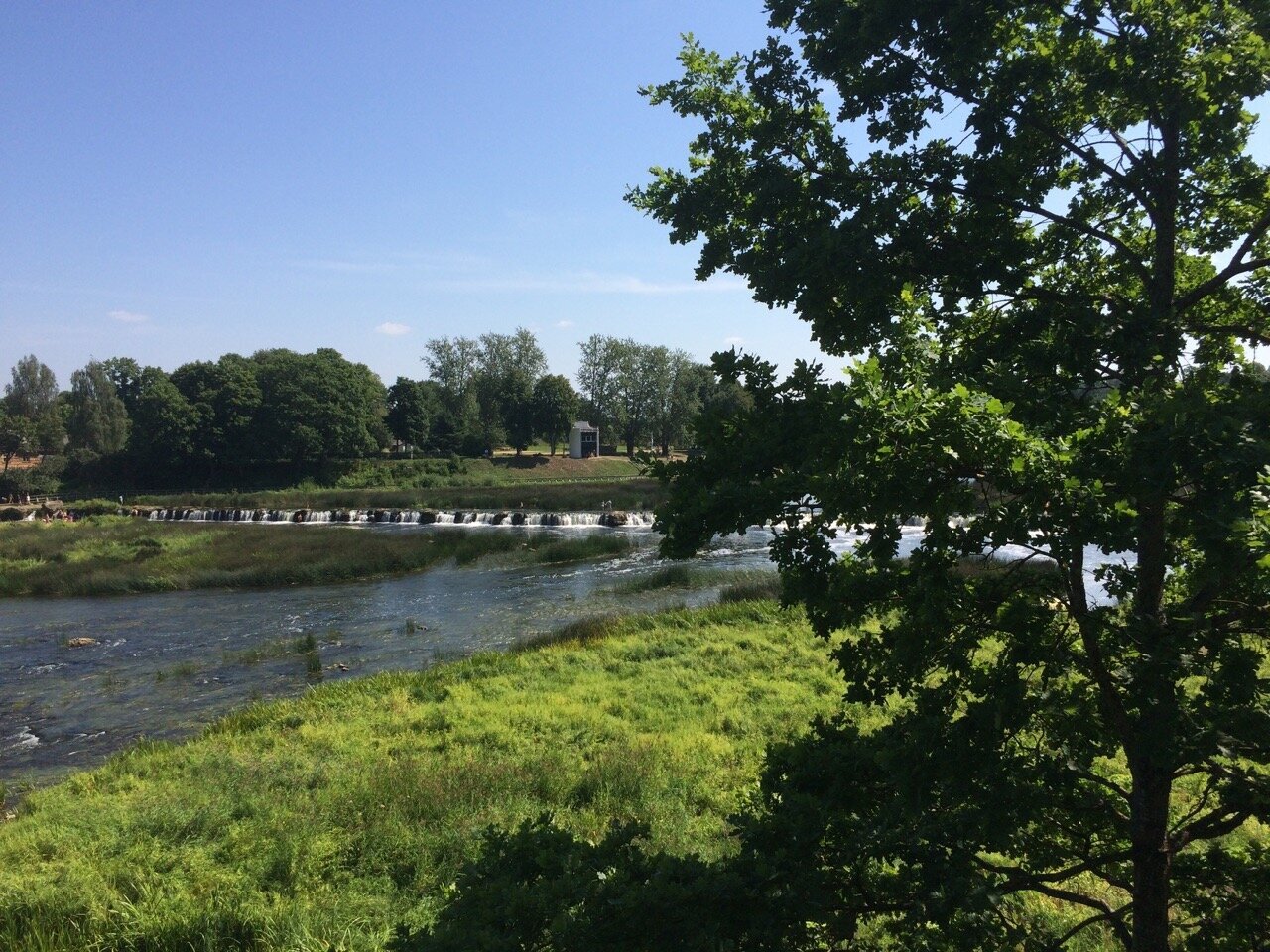
Kuldīgas brick bridge (Kuldīgas ķieģeļu tilts)
The Brick Bridge is one of the symbols of Kuldiga. It appeared in the 19th century and was considered the widest in Europe. Two carriages could drive apart on it. By the standards of the time, it was a big deal. The bridge is seen in movies, such as «The Pranks of Emil of Lenneberg» based on the book by Astrid Lindgren. And Kuldiga itself was filmed in movies as a German town.
The brick bridge is an ornament of Venta. It is similar to the arch bridge over the Moselle in Trier. The passage is paved with cobblestones. On the walls are patterns in the form of fish. At night, the road is romantically lit by lanterns.
To the right of the bridge is another waterfall — Alekshupite. It is 4.15 m high and 8 m wide. In the XIII century, the water flow was part of a mill. In the XII century the same mill was used to make gunpowder, and in the XIX century — paper. All Europe bought parchment.
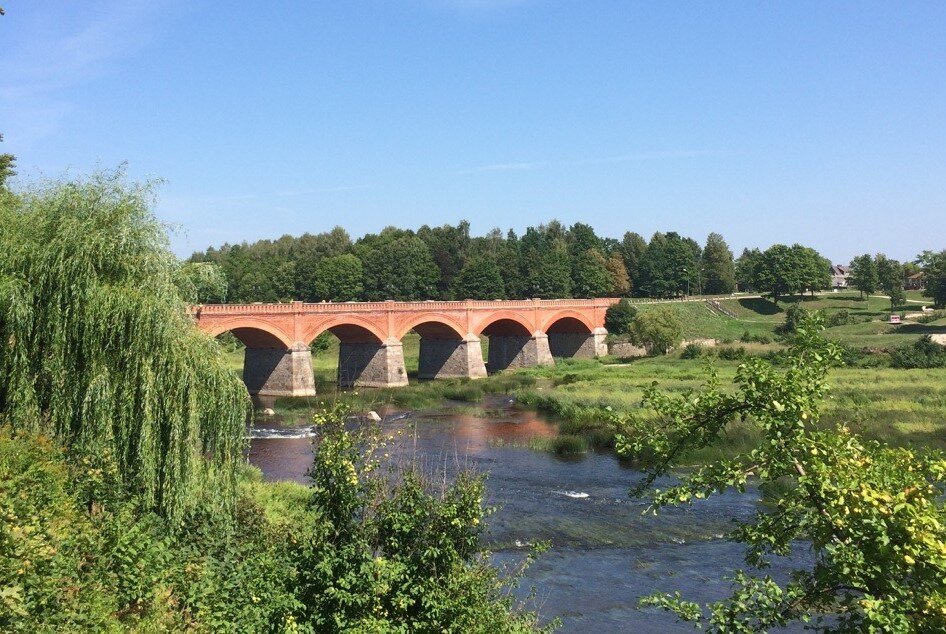
Interactive Museum of Kuldīga Ancient History (Kuldīgas aktīvās atpūtas centrs)
An unusual interesting museum that is suitable for adults and children. There are 7 rooms in the museum. In each room there are performances in the dark. The roles of historical figures are played by holograms, which cover the history of Kuldiga from 1378 to the present day.
- Hours of operation: every day from 11:00 a.m. to 6:00 p.m.
- Cost: 6 €.
St. Catherine Lutheran Church (Kuldīgas Svētās Katrīnas evaņģēliski luteriskā baznīca)
It is rare to find temples from the 13th century that have survived to this day. The wooden church was built in 1252 and rebuilt in stone in 1665.
There are several religious buildings in Kuldiga, but this one is especially significant for two reasons: since 1278 the image of St. Catherine has adorned the coat of arms of Kuldiga and Duke Jacobs was baptized here.
The building looks new and well maintained. The church has a display case with a collection of bibles from different times, dating back to 1252! Ministers allow you to climb the bell tower, which overlooks the red tiled roofs of the houses and the Ventoux.
What else is there to see in Kuldiga?
Apart from sightseeing, there is plenty to do in Kuldiga. The Nornieki ostrich nursery and the Riužupe sand caves are nearby. From spring to fall there are original events and wine fairs. In the evening, open-air movies are shown in the park.
Kuldīga has pedestrian streets with old architecture — Baznīcas iela (Baznīcas iela) and Liepājas iela (Liepājas iela). On both sides are wooden and stone houses — hotels, cafes and souvenirs. In the café you can try Kurzeme cuisine (marked «Local»).
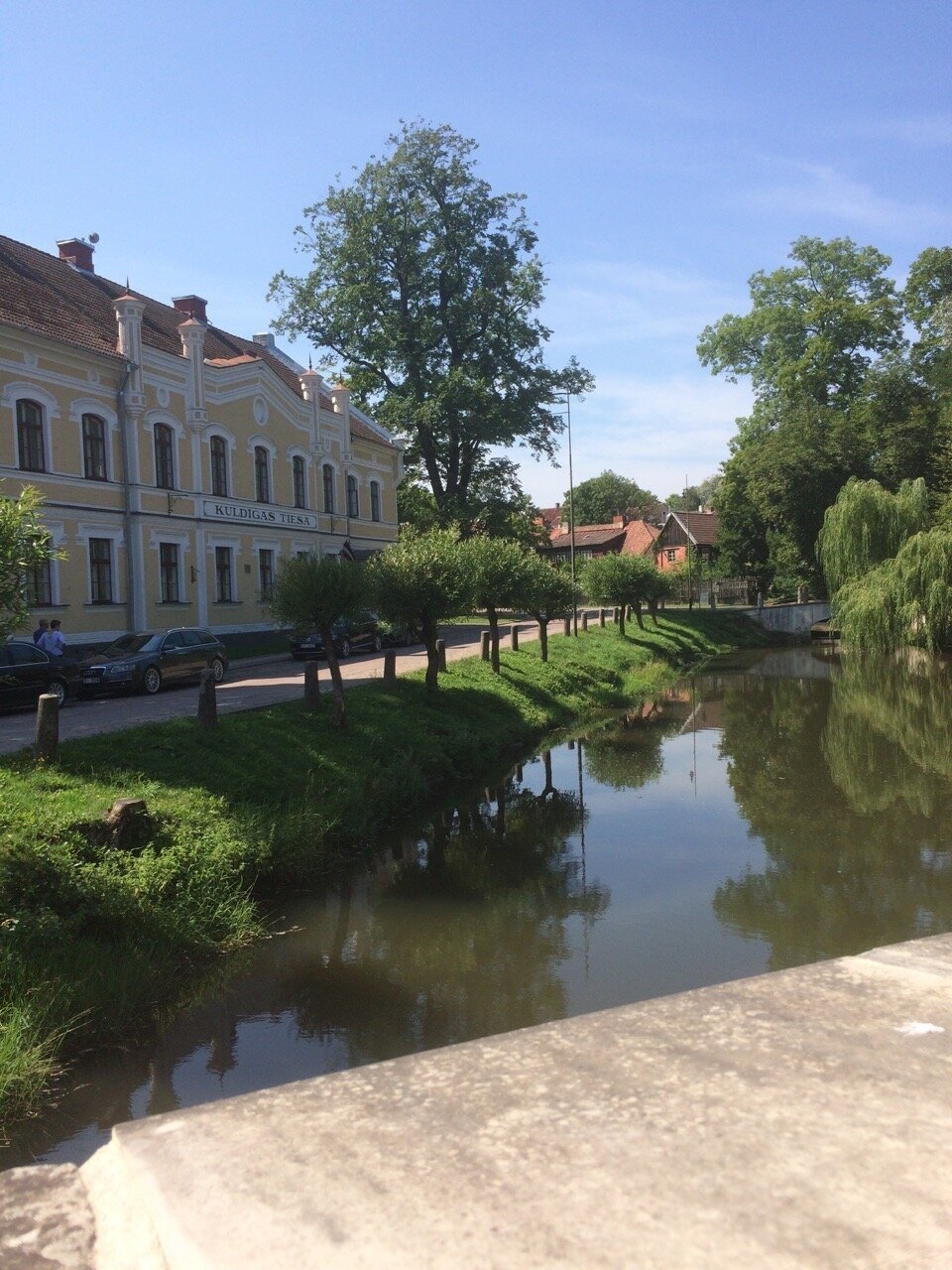
On the streets are the original photo subjects:
- Charles VII’s boot, which he lost in Kuldiga;
- cabinet with samples of matches factory «Vulkan»;
- The Teleportation Monument with Duke Ekabes;
- A sculpture of Ewald Walters, an actor who lived to be 100 years old;
- old and new town hall;
Kuldiga seems like a deserted town with dilapidated houses. But if you choose a sunny day to explore, the city’s atmosphere and sights will remind you of the setting for a historical movie.
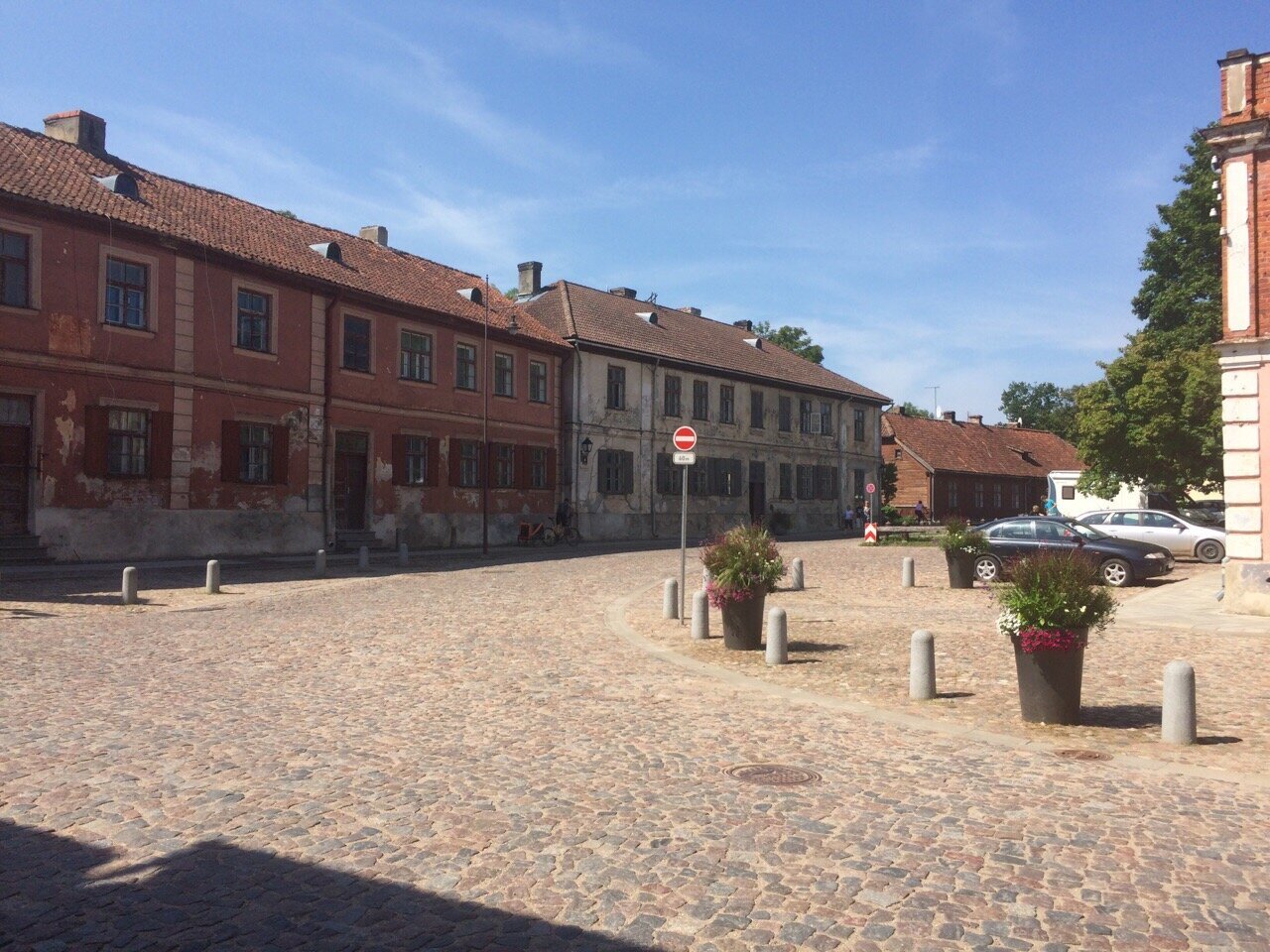
How to get from Riga to Kuldiga
The distance from Riga to Kuldiga is about 158 km. The city is located in the east of the country. There are no trains in this direction yet, but it is a pity: Latvian trains are clean and comfortable, running fast and often. By 2025 they promise to correct the situation, and then tourists will save an hour of travel time.
You can get to Kuldiga by bus. It is convenient to choose and buy tickets on the Autobus. Travel and Busfor ticket websites.
- There are 14 trips every day from 7:00 to 20:10. The bus makes 15 stops along the way. Some flights run only on weekends. It is better to check the schedule on the website.
- Travel time: 3 hours on average.
- Cost: 6,40 € one way.
- Departure station: Rīgas SAO (Prāgas iela 1), platform 3 or 4.
- Arrival station: Kuldīgas AO.
The carrier is Nordeka. Tickets can be bought in advance online, at the station ticket office or from the bus driver, if there are seats left.
